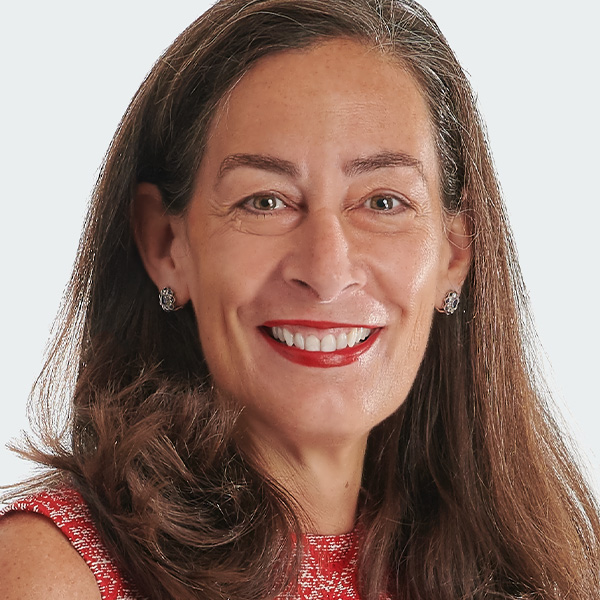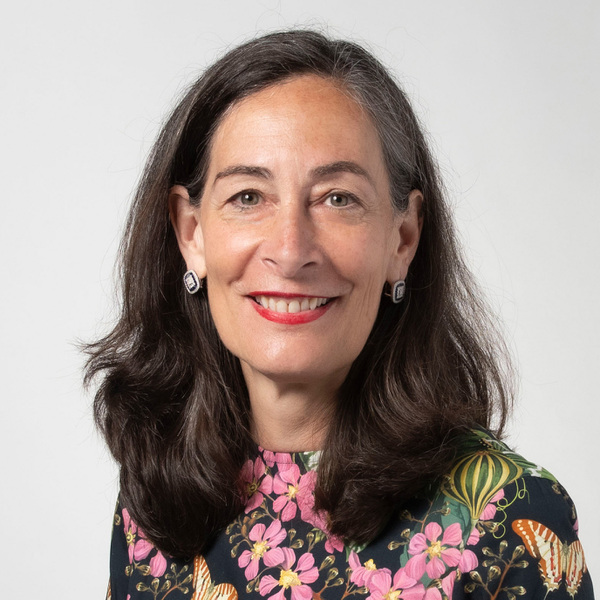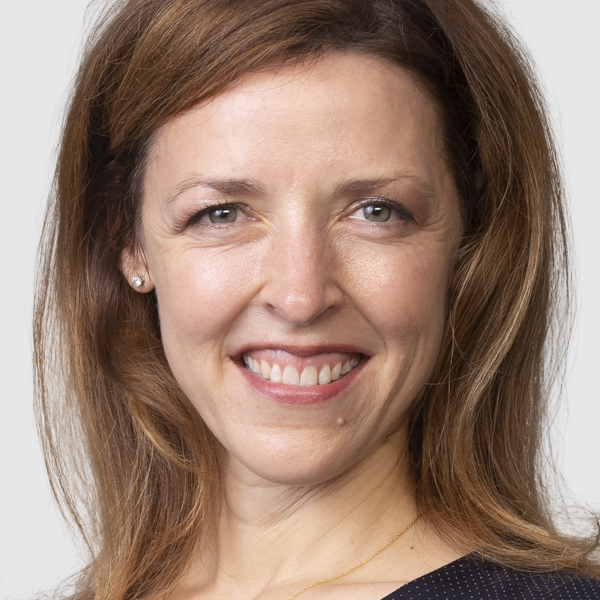Many families wish to engage the next generation in philanthropy. Those who approach the conversation early are able to communicate important lessons about their family’s values, the benefit of shared passions across generations and understanding financial literacy. For those interested in engaging the next generation in their family giving, BBH Partner Kathryn George and Senior Wealth Planner and Principal Kerri Mast discussed how to best approach this.
Timing engagement and example strategies to employ
Kerri Mast (KM): Do you think there’s a right age to engage the next generation around philanthropy?
Kathryn George (KG): I don’t think there’s a right age, but I do think earlier is better. While my husband and I formally introduced our children to our family’s donor-advised fund (DAF) when they were in their late teens, they’ve heard us talk about philanthropy their whole lives. After my husband and his brothers lost their parents 30 years ago, they created a DAF to honor them, and every year they give to a cause that meant something to their parents. That inspired my husband and I to set up our own DAF 20 years ago, and my hope is that when I am no longer here, my kids get together and do the same thing.
KM: One of the ways we work with families is to help them think through specific strategies that may be appropriate in terms of how or when they engage the next generation. Talk a little about the strategies that you used with your children.
KG: When the time came to officially introduce the DAF to our children, my BBH relationship manager and wealth planner prepared a presentation for my kids, and we planned a meeting to discuss what the DAF was and what we wanted it to do for our family. First, we presented the DAF’s financial statements as a way to introduce them to investing and asset allocation.
After sharing the details of the DAF, we started talking about our family mission. To help my kids figure out their passions, we used an interactive tool. We had them look at a workbook with a series of newspaper headlines about certain causes with evocative images and asked them to rip out the pages that spoke to them. They all chose totally different causes, but the conversation about why they chose what they chose was so fun to watch. Coming out of that, we agreed to get together annually to discuss what causes we want to give to as a family.
Another strategy that we employed came up during the COVID-19 pandemic. My husband and I support an organization that provides services to families that bring their children to New York City for cancer treatment. Their revenue model was drastically impacted during the pandemic, so they were asking their regular donors to make extra gifts. I spoke to the head of the organization, and we scheduled a Zoom for her and my three children to talk about how COVID-19 had affected the organization’s ability to accomplish its mission. She presented the organization’s financial statements and brought two doctors who talked about the pandemic’s impact on patients’ ability to get treatments. At the end, all three kids said we had to donate. It was a great educational experience, and it has been the most impactful to them in terms of being able to touch and feel what dollars can do.
Dealing with family dynamics when giving across generations
KM: One meaningful dynamic we see in the philanthropic space relates to a family’s attempt to strike a balance between identifying common causes that bring them together and respecting each other’s individuality. How do you see families striking that balance?
KG: That can be a big challenge. I work with many families that have a very narrow mission, and sometimes they find that when they try to bring their children into their philanthropy, the kids are resistant because they aren’t interested in the same mission. This isn’t always the case – sometimes it works – but for my family, if I tried to have a narrow mission focused only on causes my husband and I care about, our children would not be engaged. Instead, we decided to give up some control and focus on their individual interests. We let them come and use their voice to advocate for what they care about. There is no one-size-fits-all solution here – it depends on the family and how narrow they want to be in their mission.
KM: There’s also the power dynamic. When we invite our children to the table to share in our philanthropy, there is often a power imbalance. Even if you give children the discretion to give away money, do you ever see that there is a reluctance for them to exercise that discretion?
KG: I have worked with clients where that is a factor. I’ve seen families where the kids simply don’t want to give away money that is not theirs. That’s not a problem in my family – one of my kids actually wants to give away more than we want him to, and we had to give him a budget. It forced him to be more thoughtful and make choices, which is important, because it’s not just this unlimited bucket. We also know families where the kids don’t want to inherit the money, and we’ve worked with them to have the parent and children give away the money together.
Understanding generational differences in giving
KM: In some cases, the next generation wants to be involved in the family’s philanthropy, but their ideas might differ from those of their parents regarding the grantmaking strategy. How do you see that play out?
KG: There is a national trend happening where the younger generation wants to make larger donations more quickly and spend down the charitable vehicle. They are challenging the traditional model of an endowment-type approach with charitable funds, where you typically spend what you expect in return from our investments.
KM: What other generational differences are you seeing?
KG: Impact is something we hear a lot about from the next generation. It drives their giving. When I have given, it’s always about what the organization wants to do with the donation. I don’t think about measuring impact, but the next generation does. They want to give to something specific where they can see outcomes.
KM: What is causing this heightened focus on impact?
KG: I think it’s social media. Our kids find out about world events instantaneously in a way that didn’t happen when we were growing up. They’re much more aware of the need in communities for help, and they want to be involved. There’s such an overlap between philanthropy and impact investing, and we’re seeing kids come and want to make charitable gifts, but they’re treating them like investments. They don’t just care where the money is going – they care what it is invested in and are expecting return.
Creating structure around family philanthropy to help limit conflict
KG: Tell us about the importance of family mission statements.
KM: The family coming together around a mission is so important because it’s what continues to bring them together to give. We see two common ways of structuring philanthropic mission statements: issue-oriented (for example, a focus on affordable housing) and process-oriented (for example, giving to organizations with sustainable revenue models). It’s important to remember that missions are not static. Most of the families we work with have a mission that evolves over time to respond to changes they see in the community or areas of need and to reflect new family members that are coming in. The mission should guide a family’s philanthropy, but it doesn’t dictate it.
KG: I think this ties in with a common concern parents have when engaging their children in philanthropy: What if parents and kids disagree on what they want to support? There were some gifts that my son wanted to make that I didn’t understand, but I engaged with him to understand why this was a priority. I appreciated his response, and he won me over. In trying to understand why it is that you disagree with their priorities, and then understanding why it is that their priorities are the way they are, often you find there is a common ground.
KM: In situations like this, sometimes it is helpful to bring in a third party to help evaluate that organization as a grantee. That puts the parent and the child on the same side of the table. But there also might be organizations that philosophically you are opposed to funding because they do not align with your values. I have plenty of clients who give their kids some latitude in choosing organizations but still establish certain parameters. In addition, we have started helping families put together an impact policy statement, which helps them look at their philanthropy in a way that is similar to how they look at their portfolio. Instead of making allocations to certain asset classes, we consider allocations to philanthropic strategies or interest areas. This creates a framework where the next generation can exercise their latitude, but they can’t do whatever they want.
Communicating is key to success, no matter where you are in the conversation
KM: We often see philanthropy as the first place where clients engage the next generation in conversations about wealth. Why do you think that is?
KG: Philanthropy is a safe place to start the conversation. It’s a way to talk about what you want your wealth to do for your family, your community and the world. It’s also a way to talk about investing, financial statements and budgeting and to set priorities. Most importantly, it’s a great way to talk about values. When you sit down and tell your child about this money you have set aside to give back to the community, that is a very powerful thing. No matter your family’s approach to philanthropy, communication around your values and what you want this philanthropy to accomplish is critical.
KM: I agree. The most successful families when it comes to philanthropy are those that get the challenging topics on the table and think about the conversation as one that takes place over time.
KG: Sometimes we hear from parents that they have started the conversation, but the next generation isn’t interested. Why do you think that is?
KM: There are a variety of reasons for this. If there are tight parameters around grantmaking that don’t align with the next generation’s interests, it may leave them feeling like their role is not meaningful. In this case, parents might consider creating an incentive for participation, such as giving children some latitude in grantmaking decisions.
A second reason relates to the ages and stages of your children. Young adults may be focused on their education or establishing themselves personally and professionally. If that’s the case, we often see that if parents leave the door open, kids come back around and want to participate once they have capacity.
Guiding the next generation through the business of philanthropy
KM: Getting solicited by all sorts of organizations and individuals can be daunting for the next generation. How have you handled this solicitation issue for your children?
KG: When we first introduced my kids to the family DAF, we went over real solicitations they had received in the mail. We explained that you can give any amount; it doesn’t have to be huge. I also kept every solicitation that came in the mail to illustrate that there are choices that have to be made, and you need to come up with a framework for how to respond to requests for giving.
KM: Yes, it’s important not only to have a framework for responding, but also for the family to create a structure that gives the young adult some cover. This way, if their friend is asking for money, they can respond in a way that is appropriate but that doesn’t feel so personal. It could be as simple as having a canned response like, “We have a family grantmaking board. I would be happy to bring your request to them. These are the type of things we consider.”
With the next generation, it doesn’t matter as much how big the grants are. It’s really about the process – thinking about their values and how they are going to go about expressing those through their philanthropy.





